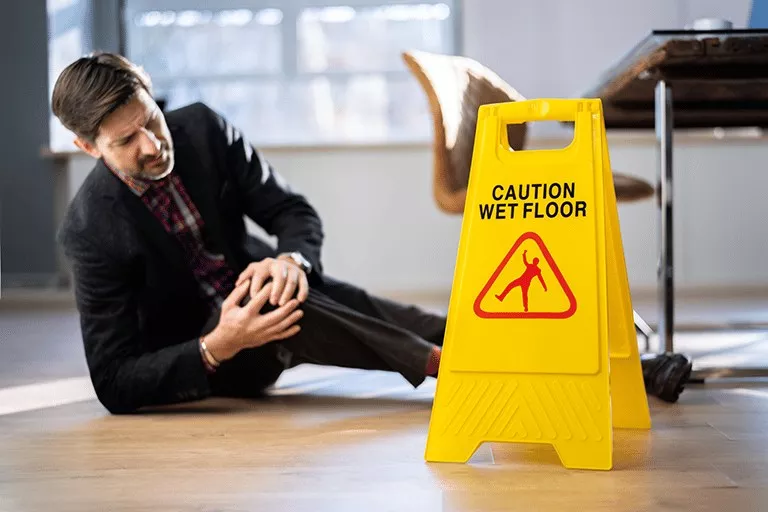All kinds of injuries can occur in the workplace, costing both employers and employees valuable time and money.
Today, we will be looking at four of the most common workplace injuries and share some safety tips to help you avoid them.
TRIPS, SLIPS, AND FALLS
One-third of all workplace injuries are caused by slips, trips, and falls, which are also the main reason for workers’ compensation claims. Head, back, and neck injuries, fractured bones, wounds, sprains, and torn muscles are some of the ailments sustained.
The following are the most typical causes of falls at work :
Slips: Slips include accidental spills, greasy or damp surfaces, weather risks like icy steps or walkways, and loose carpets.
Trips: Uneven walking surfaces, cluttered areas, wrinkled flooring or matting, exposed wires, and poor illumination.
These sorts of workplace injuries may be avoided in three ways, adequate cleaning, good walking surfaces, and appropriate footwear. Employees should be urged to report any places that contain clutter, obstructions, spills, or damage.

GETTING HIT BY OR CAUGHT IN MOVING MACHINERY
Although they happen more frequently in factories, on farms, and with construction equipment, accidents can happen to anybody using heavy gear. A safety hazard is equipment that is improperly guarded. The outcomes are sometimes catastrophic when body parts become entangled in or impacted by exposed moving parts or flying debris from machinery without protective shields. Crushed hands and limbs, severed fingers, blindness, and even worse injuries caused by equipment are all listed on a long and terrifying list.
The best method to prevent mechanical risks is to constantly offer sufficient operator training, protective apparel, and safeguards for every machine part, function, or process that might cause harm.
VEHICLE-RELATED ACCIDENTS
Accidents are possible wherever vehicles of any kind are located. These include being hit or run over by a moving vehicle, falling out of a vehicle, being hit by an object that fell out of the vehicle, or being crushed or pinched by an overturned vehicle.
Avoiding these types of accidents starts with assessing who is at risk, and when and where these accidents most commonly occur. Only then can preventive measures be established more easily. Concentrate on workplace design, ensuring that all layout paths always separate pedestrians and vehicles and that obstacles are clearly visible. Directions, speed limits, and road signs are also helpful.

FIRE AND EXPLOSIONS
Risk factors including damaged gas lines, incorrectly stored combustibles, or exposed flames are commonly to blame for explosions and fires in the workplace. Damage to the respiratory system, various degrees of burns, and even severe deformity are among the injuries that may follow. Explosions and flames have the greatest fatality rate of all likely workplace accidents, accounting for 3% of all workplace injuries.
Following OSHA’s hazard communication guidelines will assist employees to prevent these kinds of accidents. All chemical material safety data sheets should also be maintained on hand, and wearing personal protective equipment should be a requirement for all personnel.
To get quality treatment and the best worker’s compensation visit Specialty Care Clinics, call us now.
